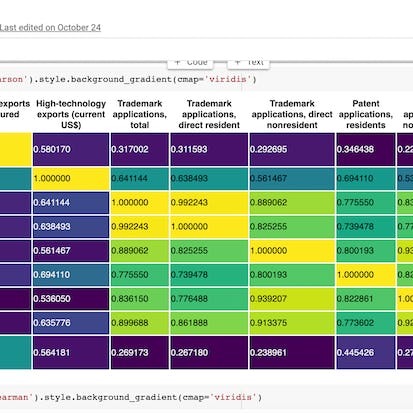- Level Beginner
- المدة 3 ساعات hours
- الطبع بواسطة Coursera
-
Offered by

عن
By the end of this project, you will learn how to use Python for basic statistics (including t-tests and correlations). We will learn all the important steps of analysis, including loading, sorting and cleaning data. In this course, we will use exploratory data analysis to understand our data and plot boxplots to visualize the data. Boxplots also allow us to investigate any outliers in our datasets. We will then learn how to examine relationships between the different data using correlations and scatter plots. Finally, we will compare data using t-tests. Throughout this course we will analyse a dataset on Science and Technology from World Bank. The measures in this dataset are numeric, therefore you will learn how to handle and compare numeric data. This guided project is for anyone with an interest in performing statistical analysis using Python. This could be someone from a social science background with statistics knowledge who wants to advance their analysis, or anyone interested in analysing data.الوحدات
Practical Application via Rhyme
1
Assignment
- Graded Quiz: Basic Statistics in Python (correlations and t-tests)
1
Labs
- Rhyme Project Title
1
Readings
- Project-based Course Overview
Auto Summary
The "Basic Statistics in Python" course, led by Coursera, focuses on using Python for statistical analysis, covering t-tests and correlations. Ideal for beginners, especially those with a social science background, it explores data loading, cleaning, and visualization through boxplots, correlations, and scatter plots. The course spans 180 minutes and utilizes a World Bank dataset on Science and Technology, making it perfect for anyone keen on enhancing their data analysis skills. Subscriptions are free, offering a cost-effective learning opportunity.

Instructor
Laura Gemmell


